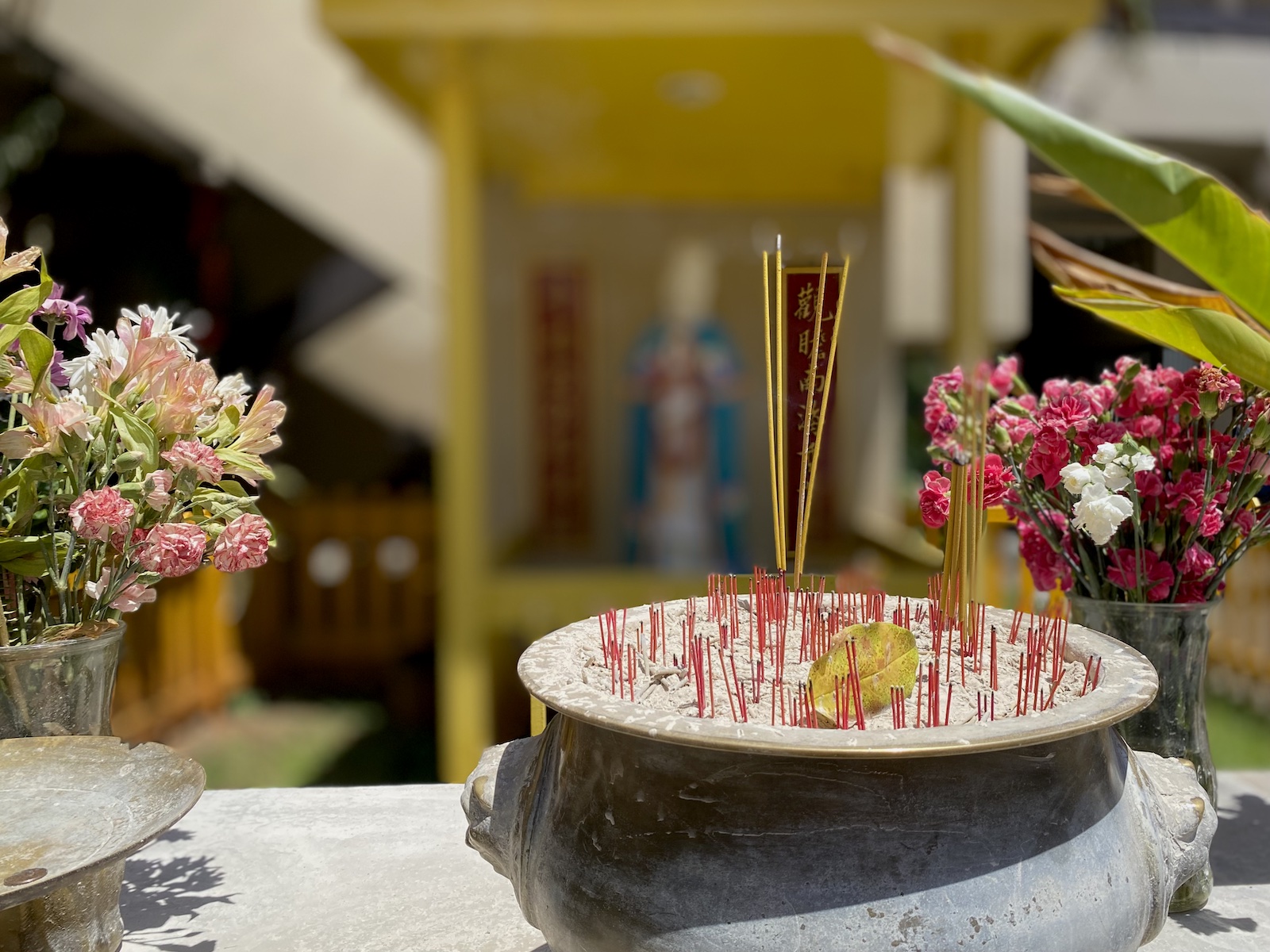We’ve been talking about seeing Chinatown, which we’ve passed by/through on the way to the docks to unload our shipping container. There was good Chinese food near us and we’ve gone to Happy Days for dim sum a few times. So Chinatown wasn’t high on our list. When we did go, it was to see an herbalist. Researching online, I found several recommendations for Dr Lau at Chinatown Cultural Plaza.
Chinatown Cultural Plaza
Built in 1974, the Chinatown Cultural Plaza is a complex with restaurants, shops, clinics, and a Chinese Herbal clinic, the reason we came here. Tak Wah Tong is where Dr Lok On Lau offers consultations. This was our first of several visits. Each time we went, we also had a meal thee, trying Seasons Taiwanese Eatery, Legend Seafood Restaurant for dim sum, and Jolene’s Market. We also bought some fruit from the market upstairs and I picked up a few Chinese snacks, like egg rolls, and some rock sugar for cooking.


Tah Wah Tong, Chinese Herbal Medicine
Dr Lau is a quiet and soft-spoken person who listened, hearing what the pulses say. He then suggested a five-day herbal tea that we cooked twice a day. The clinic was empty and quiet, as was the plaza itself. A couple of people popped to check for an appointment.
He laid out five pieces of paper. Using a traditional scale, he pulled dried herbs from the wall of jars and placed carefully-measured amounts on the paper. Then he folded up each one, one for each of the five days. His smiling wife was also there, restocking from the back.
I grew up drinking very bitter Chinese medicine, which was a struggle. So to make it more palatable, my mom gave me haw flakes. Made from the hawthorn fruit, these thin discs are sweet, delicious, and distracting. For me, these were not candy or treats; they were a necessary ally to down those concoctions. These days, when I do come across haw flakes, which is rare, I get a couple rolls.
While Dr Lau prepared the herbal medicine, I sat on a stool and watched his process. I also looked at all the boxes and bottles inside the glass case of the counter, recognizing a few items. Like White Flower Oil, which is the literal translation. 白花油.
I vaguely remember these little bottles from my childhood. Its smell is strong and sharp. You can put a dab on the temples for headaches. Or on a mosquito bite to reduce itchiness. That’s what I used it for and it’d zing. Smelling it can also help with motion sickness. White Flower Oil was created for a variety of complaints. So I was using essential oils before I even knew about or studied them.
Looking up White Flower Oil, I read that it was created in the 1920s in Hong Kong by Gan Geog Eng, an herbalist. He had researched Chinese practices and then formulated this oil after experimentation with herbs and essential oils. These days, White Flower Oil is made by different brands, each having a different composition of menthol, camphor, peppermint oil, eucalyptus oil, and lavender.



Seasons Taiwanese
We asked for a few recommendations and Seasons Taiwanese was one. It’s a small low key place that was packed. We waited for a table to open up. I’m not very familiar with Taiwanese food, aside from noodles. Beef noodle soup. And Bubble Tea. It was tough for me to order as it was very meat-heavy and/or spicy. The food was mostly cooked in pork oil, including some possibilities like tofu. Though my meal was simple, rice and vegetables, it was just right. Wade tried a beef noodle and we both had a winter melon tea to go with our meal.
Legend
We were excited to try another dim sum restaurant with traditional cart service. Har gau (steamed prawn dumplings), cheong fan (steamed rice noodle rolls), egg tarts, char siu bao (bbq pork buns)…This was a popular restaurant though the two times we went, we still got a table. With the lively atmosphere, friendly staff, light-hearted chatter, and pretty good food, we enjoyed having dim sum there.
Jolene’s Marketplace
This was an interesting place, not quite clear what it was. There were a couple of families at the high tables when we walked in. The menu had a good number of delicious-sounding choices in lobster, crawfish, braised beef and pork, and chicken. Rolls, sandwiches, melts. We decided to share a grilled cheese and clam chowder. For drinks, lemonade for Wade and a tea with tapioca balls and jelly.
At the end of July, 2024, Jolene’s Marketplace closed its Chinatown brick and mortar location. You can still order online. They also still have three locations on O’ahu, at the airport and in Kaneohe and Eva Beach. Here is the menu.



History of Chinatown
In the 19th century, the Chinese travelled to Hawai’i to work on sugar plantations. After their contracts were completed, they opened businesses such as restaurants and shops. Honolulu’s Chinatown, one of the oldest in the country, was founded in the 1840.
Late 1899, a ship brought the bubonic plague to Hawai’i. So the city quarantined the ships and they used fire to destroy buildings housing those with it as a way to combat and control the outbreak. The burning got out of control, continuing for seventeen days and spreading to the wharf. Over 4,000 homes were demolished, leaving 7,000 homeless.
Chinatown was rebuilt and is a tourist destination these days. Driving by the rest of Chinatown, we passed many restaurants, bakeries, souvenir shops, and lots of flowers. If you don’t want to drive, you can hop on the Waikiki Trolley that stops at King and Berthel.
| Chinatown Cultural Plaza 100 N Beretania Street Honolulu | |
| Legend Seafood Restaurant Suite 108 (808) 532-1868 | Seasons Taiwanese Eatery Suite #109 (808) 744-0272 website |
| Jolene’s Market Suite 105 (808) 540-1000 | Tak Wah Tong Suite 115 (808) 537-4669 |
